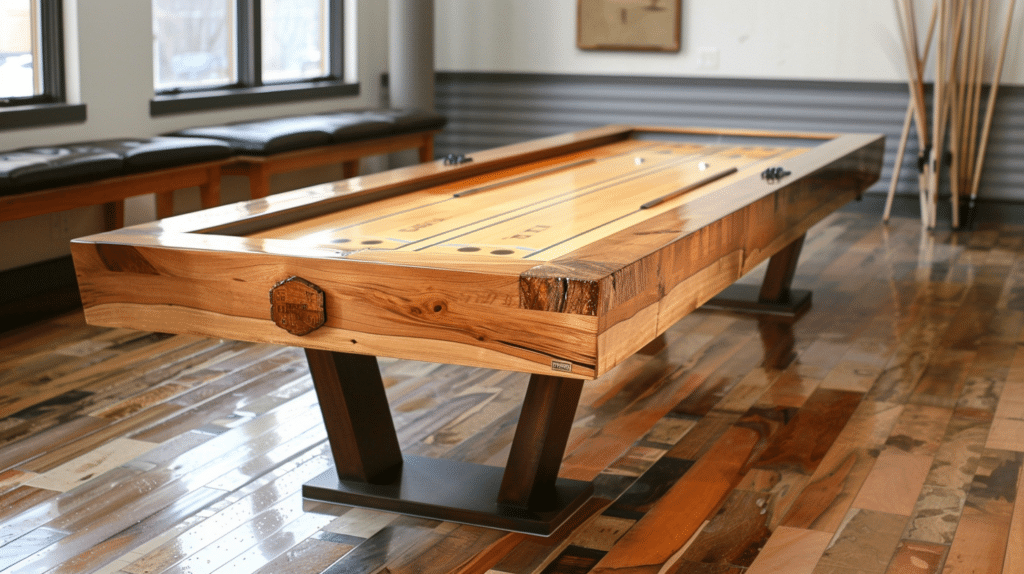Shuffleboard is a timeless game that combines strategy, skill, and a touch of finesse. Originating in 15th century England, shuffleboard has evolved into a beloved pastime enjoyed in bars, recreational centers, and even in the comfort of one’s own home. While it may seem simple at first glance, mastering shuffleboard requires understanding its nuances and employing various techniques. In this comprehensive guide, we’ll delve into the rules, equipment, techniques, and strategies to help you become a shuffleboard champion.
Understanding the Basics
Shuffleboard is typically played on a long, smooth surface known as a shuffleboard table. The objective of the game is to slide weighted pucks, also known as weights, across the table into scoring zones while knocking your opponent’s pucks off or preventing them from scoring.
Equipment
- Shuffleboard Table: A shuffleboard table can range in length from 9 to 22 feet. The surface is typically made of wood or synthetic materials, providing a smooth playing area.
- Weights (Pucks): Each player or team has a set of four weights, usually color-coded. These weights are slid down the table to score points.
- Scoreboard: A scoreboard is used to keep track of points scored by each player or team.
- Wax or Powder: To reduce friction and help the weights glide smoothly across the table, players often apply wax or powder to the playing surface.
Rules of the Game
- Setup: Players or teams stand at opposite ends of the shuffleboard table. Each player or team takes turns sliding their weights down the table, alternating between players or teams.
- Scoring: Points are scored based on the placement of the weights on the table. The closer a weight is to the far end of the table without falling off, the higher the points awarded. Additionally, players can score by knocking opponents’ weights off the table or into lower-scoring zones.
- Winning: The game typically consists of multiple rounds, or frames. The player or team with the highest total score at the end of all frames wins the game.
Techniques and Strategies
- The Grip: Hold the weight firmly but not too tightly. Find a grip that feels comfortable and allows for control and precision.
- The Slide: Stand with your dominant foot forward and your weight evenly distributed. With a smooth motion, push the weight down the table, aiming for the desired scoring zone.
- Bank Shots: Utilize the edges of the table to bounce your weight off and into strategic positions, such as knocking opponents’ weights off or scoring in hard-to-reach areas.
- Defensive Play: Sometimes, preventing your opponent from scoring is just as important as scoring yourself. Aim to block their scoring opportunities or knock their weights off the table.
- Reading the Table: Pay attention to the wax or powder on the table, as well as any imperfections or irregularities. Adjust your technique accordingly to navigate the playing surface effectively.
- Practice Makes Perfect: Like any skill-based game, mastering shuffleboard takes practice. Start by familiarizing yourself with the rules and techniques, then spend time honing your skills through regular play. Whether you’re competing against friends, joining a league, or simply enjoying a casual game at home, shuffleboard offers endless opportunities for fun and friendly competition.
Conclusion
Shuffleboard is a classic game that rewards strategy, precision, and finesse. By understanding the rules, equipment, techniques, and strategies outlined in this guide, you can elevate your shuffleboard game to new heights. Whether you’re a seasoned veteran or a newcomer to the game, there’s always something new to learn and enjoy in the world of shuffleboard. So gather your friends, set up the table, and let the shuffleboard showdown begin!






